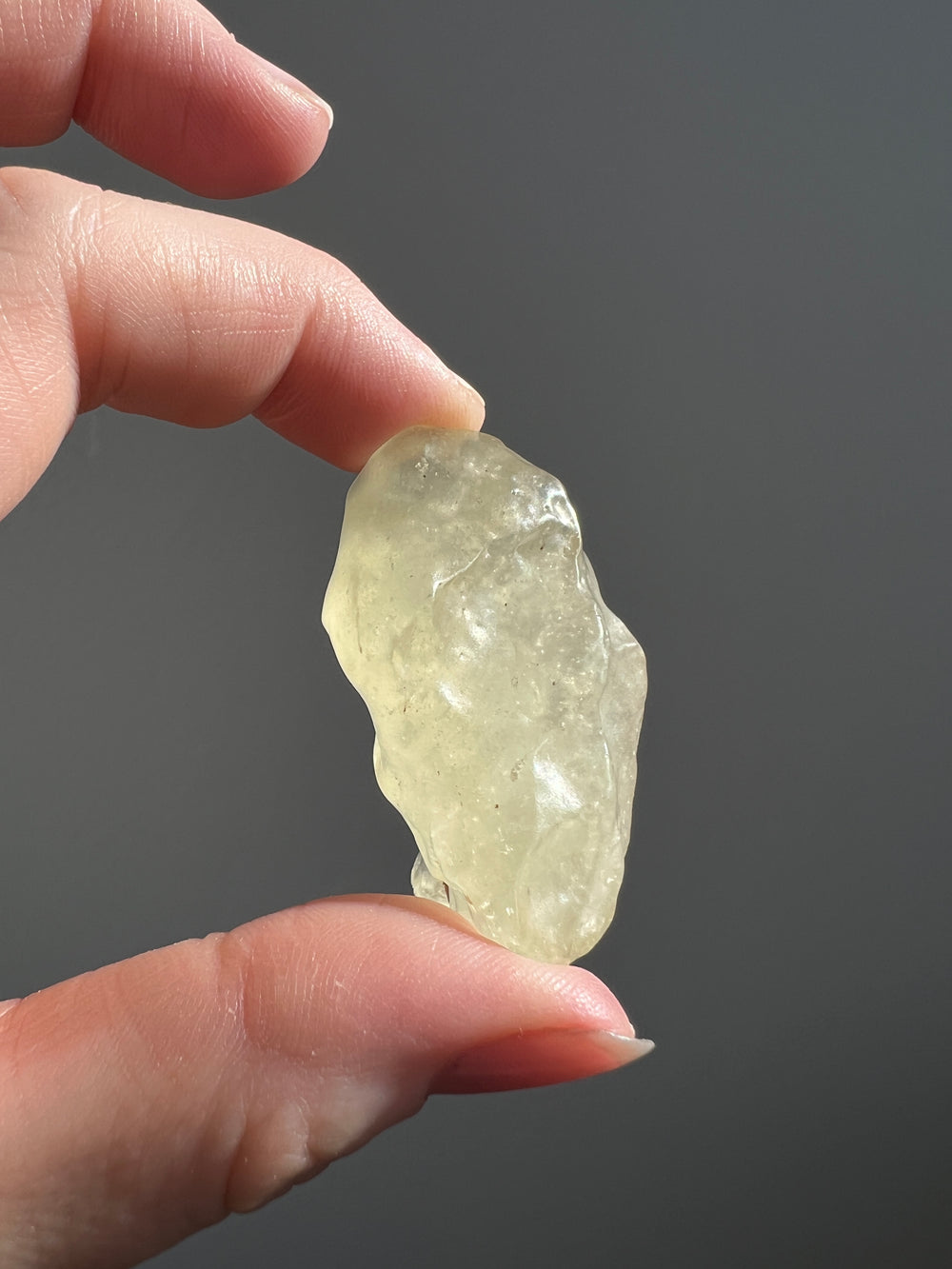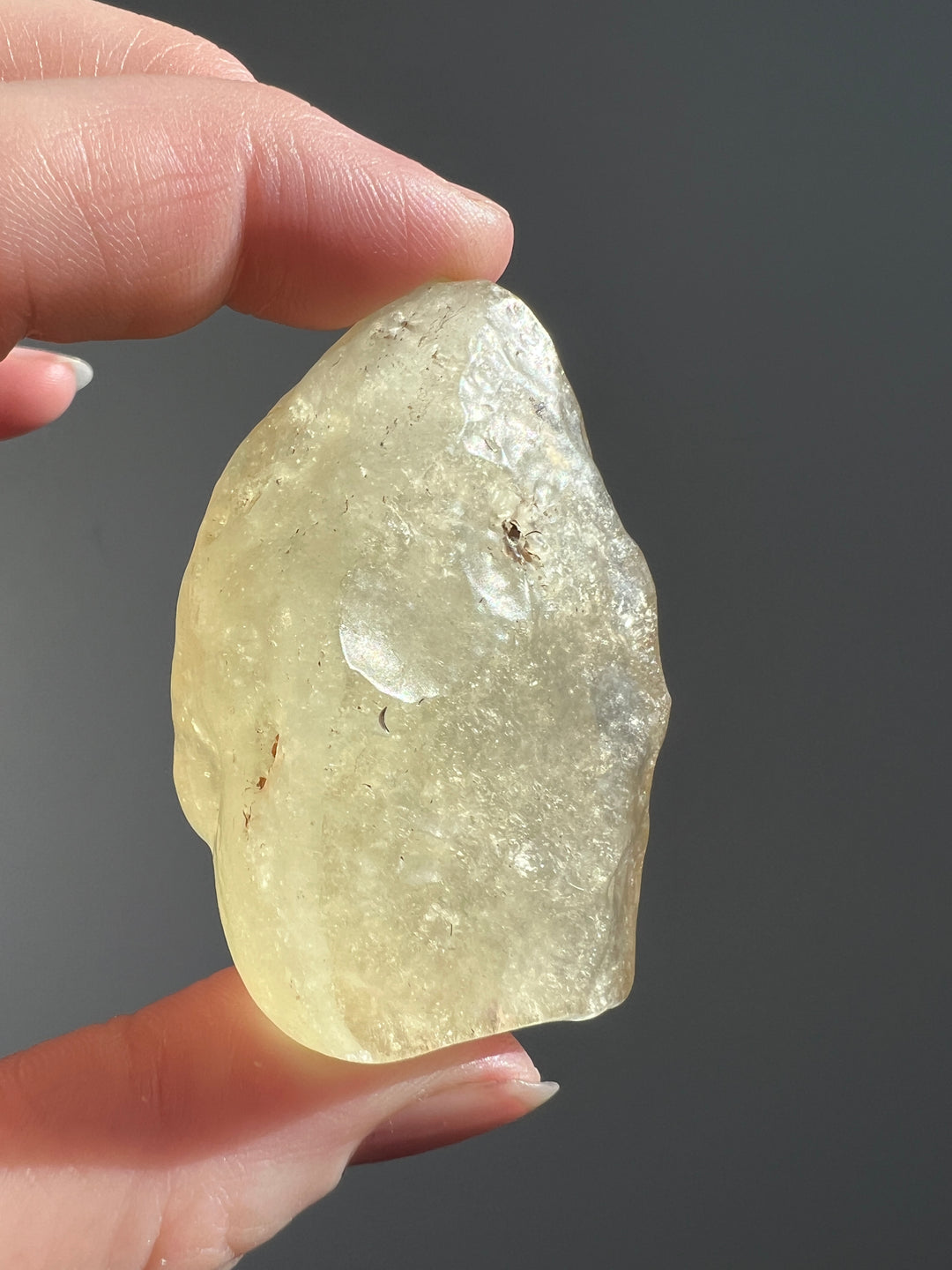Libyan Desert Glass | FAQ
Q: What is Libyan Desert Glass? A: Libyan Desert Glass, also known as Great Sand Sea Glass, is a natural glass found in areas in the eastern Sahara, particularly in the deserts of eastern Libya and western Egypt. Formed from a meteoritic impact or airburst event, this glass is characterized by its yellow to greenish-yellow color and is approximately 26 million years old.
Q: What healing properties are attributed to Libyan Desert Glass? A: Libyan Desert Glass is believed to possess powerful energetic properties. It's thought to enhance willpower, bring good fortune, and aid in spiritual transformation. Many consider it a stone of protection and enlightenment, promoting psychic abilities and increasing one’s connection to cosmic knowledge.
Q: How can Libyan Desert Glass be incorporated into meditation or spiritual practices? A: In meditation and spiritual practices, Libyan Desert Glass is used to enhance spiritual attunement, facilitate communication with higher realms, and to promote deep self-reflection. It's believed to aid in accessing past life knowledge and to provide insights into one’s spiritual purpose.
Q: What unique characteristics does Libyan Desert Glass possess? A: Libyan Desert Glass is notable for its pale yellow to greenish-yellow color, often translucent or transparent, with a vitreous luster. Its irregular shape and glassy texture, along with the presence of tiny bubbles and inclusions, make it unique.
Q: What is the Mohs hardness of Libyan Desert Glass? A: Libyan Desert Glass has a Mohs hardness of about 5.5, making it relatively soft and susceptible to scratching, similar to other forms of natural glass.
Q: Is Libyan Desert Glass suitable for use in jewelry making? A: Yes, Libyan Desert Glass is often used in jewelry, particularly as cabochons or polished stones. It is typically set in pendants, rings, or necklaces, but due to its softness, it should be worn with care to avoid damage.
Q: How should Libyan Desert Glass be cared for and cleaned? A: Libyan Desert Glass should be cleaned gently with a soft cloth and mild soapy water. Avoid harsh chemicals and high heat, as they can damage the glass.
Q: What significance do the color and properties of Libyan Desert Glass hold? A: The yellow color of Libyan Desert Glass is often associated with the power of the sun and the cosmic energies. It's believed to represent enlightenment, clarity, and spiritual awakening, making it a sought-after stone for spiritual practices.
Q: What metaphysical properties are associated with Libyan Desert Glass? A: Metaphysically, Libyan Desert Glass is said to offer protection against negative energies, enhance willpower, and aid in spiritual growth. It's also believed to be a powerful tool for manifesting one's desires and connecting with higher cosmic forces.
Q: What are the geological properties of Libyan Desert Glass? A: Geologically, Libyan Desert Glass is a type of tektite, formed by the intense heat and pressure from a meteoritic impact or airburst. This event melted and fused the sand into a glass-like material, which was then scattered over a large area.
Q: Can you explain the scientific properties of Libyan Desert Glass? A: Scientifically, Libyan Desert Glass is primarily composed of silica (silicon dioxide) with traces of other oxides. It is characterized by its amorphous structure, lack of crystallinity, and the presence of lechatelierite, a high-temperature form of silica.
Q: What is the mineral composition of Libyan Desert Glass? A: Libyan Desert Glass is mostly silica with minor impurities of oxides of aluminum, iron, magnesium, and calcium, which contribute to its color and properties.
Q: Does Libyan Desert Glass fade or change color over time? A: Libyan Desert Glass is generally stable and does not fade or significantly change color over time.
Q: How can I distinguish between real and fake Libyan Desert Glass? A: Authentic Libyan Desert Glass often has a unique, irregular shape and may contain tiny bubbles or inclusions. It has a distinct glassy texture and a characteristic yellow color. Fakes might be made of colored glass or plastic and lack these natural features.
Q: How is Libyan Desert Glass formed? A: Libyan Desert Glass was formed from a meteoritic impact or airburst that melted the desert sand and fused it into glass. This event occurred approximately 26 million years ago, scattering the glass across parts of the Libyan and Egyptian deserts.
Q: Are there different types or variations of Libyan Desert Glass? A: Variations in Libyan Desert Glass mainly involve differences in size, shape, and the degree of translucency. Some pieces may have more pronounced bubbles or inclusions.
Q: What's the historical significance of Libyan Desert Glass? A: Libyan Desert Glass has been known since ancient times and was used by Egyptians for making tools and jewelry. The most famous piece is a carved scarab that is part of King Tutankhamun's pectoral.
Q: What is the origin of Libyan Desert Glass? A: The term "Libyan Desert Glass" refers to its discovery in the deserts of Libya and Egypt. It is not associated with any specific civilization but has been used throughout history for various purposes.
Q: Where is Libyan Desert Glass typically found? A: Libyan Desert Glass is found in the eastern Sahara, primarily in the deserts of eastern Libya and western Egypt, in an area known as the Great Sand Sea.
Q: How rare is Libyan Desert Glass? A: While Libyan Desert Glass is not exceedingly rare, high-quality specimens, especially larger pieces with few inclusions, are highly valued and sought after by collectors and enthusiasts.





